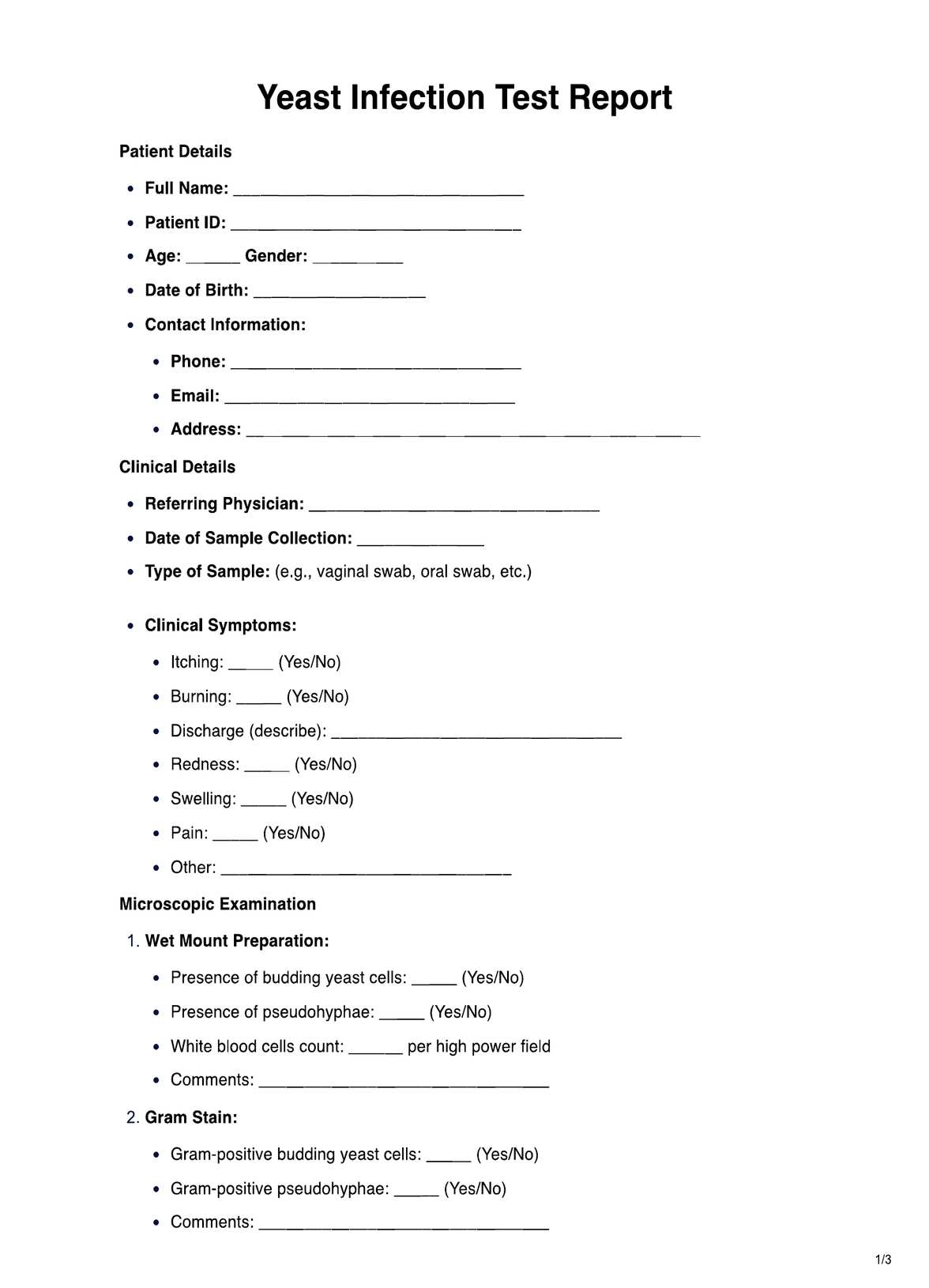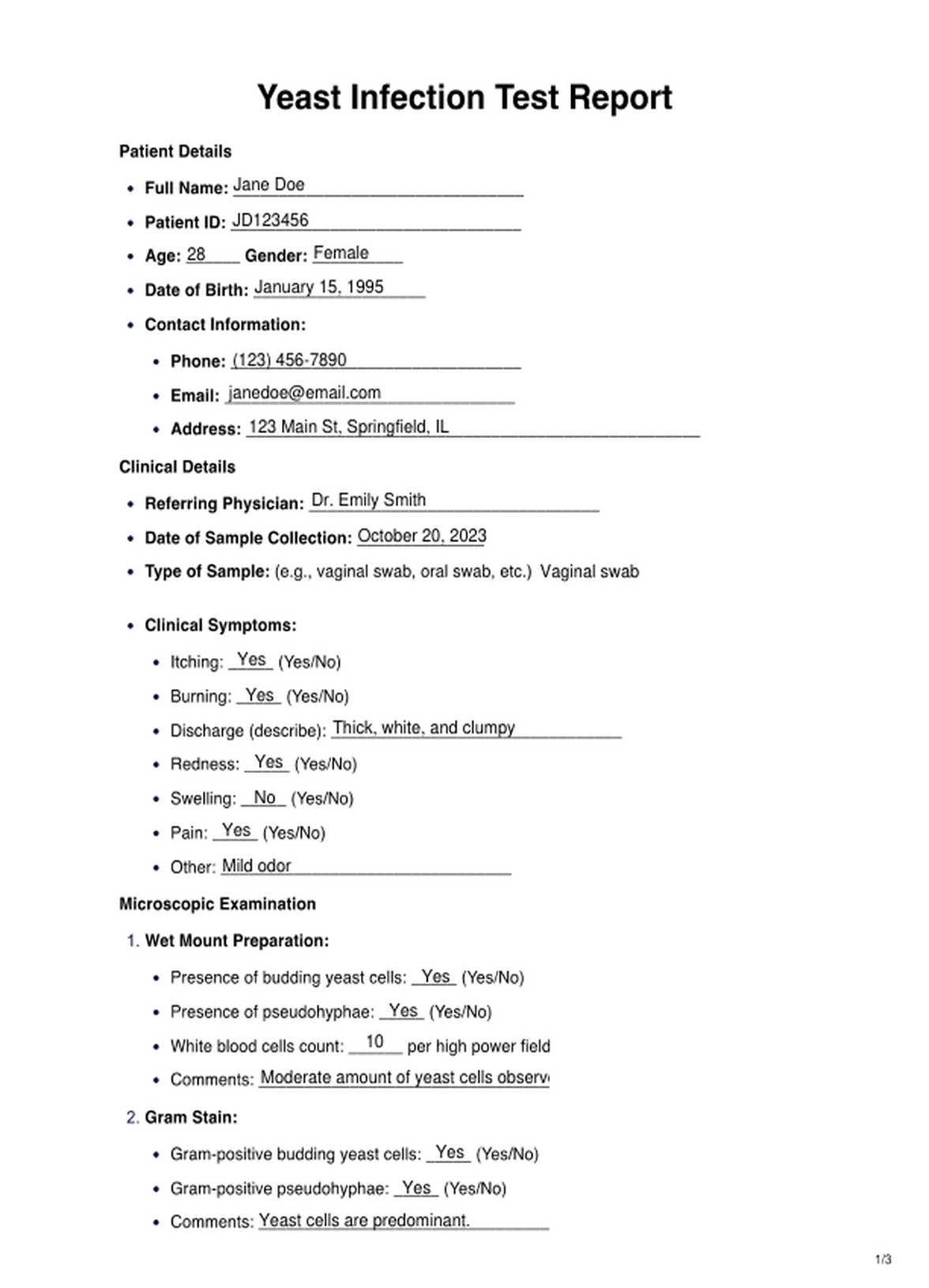Yeast Infection
Discover reliable Yeast Infection Test options, from professional lab tests to convenient at-home kits. Gain insights into your health and find effective solutions.


What is a Yeast Infection Test?
A yeast infection test is a vital diagnostic tool meticulously designed to detect the presence of Candida, a specific type of yeast responsible for causing infections within the human body. These infections caused by Candida, commonly known as yeast infections, are prevalent but often go misdiagnosed due to their symptoms' striking similarity to other medical conditions. Such yeast infections can occur in various body parts but are predominantly found in the vaginal region.
The advent and accessibility of at-home yeast infection tests have revolutionized how these infections are diagnosed, offering an unmatched level of convenience and privacy. These user-friendly kits are typically equipped with all the necessary tools for the test: a swab for collecting a sample from the affected area and a test strip or solution that undergoes a color change to signify the presence of yeast. This method provides a rapid, confidential, and efficient means of determining if your symptoms align with a yeast infection.
To gain a comprehensive understanding of yeast infections, their symptoms, and how they are diagnosed, we encourage you to explore our Yeast Infection Tests resources. We also have a detailed explainer video that further simplifies the concept and usage of yeast infection tests for those who prefer visual learning—breaking down the process step-by-step offers clear, easy-to-follow guidance to support your understanding and ensure accurate results when using an at-home yeast infection test kit.
Yeast Infection Template
Yeast Infection Example
How does it work?
Conducting a yeast infection test at home is a straightforward process involving simple steps. These tests are designed to be user-friendly, ensuring you can accurately diagnose a yeast infection from the comfort of your home. Here's a step-by-step guide on how to use an at-home yeast infection test:
Step 1: Prepare for the Test
Start by unpacking your at-home yeast infection test kit and ensuring all necessary components are present. Typically, these kits include a swab for sample collection, a test strip or solution for testing, and instructions for use. Familiarize yourself with the instructions to ensure you understand the process before starting.
Step 2: Collect the Sample
The next step is to collect a sample from the affected area using the provided swab. Be sure to do this gently to avoid causing any discomfort or irritation. The goal is to collect enough samples to test effectively without causing unnecessary distress.
Step 3: Conduct the Test
Once you've collected the sample, it's time to conduct the test. Depending on your specific kit, this may involve applying the sample to a test strip or combining it with a test solution. Follow the instructions carefully to ensure accurate results.
Step 4: Read the Results
After conducting the test, you'll need to wait a specified amount of time before reading the results. This typically involves observing a color change, indicating yeast's presence. Remember, the exact interpretation of results may vary depending on the specific test kit.
We offer a Printable Yeast Infection Test for those who prefer a written guide. This printable yeast infection test guide can be a handy reference while conducting the test. Remember, the instructions may vary based on the specific yeast infection test kit you're using. Always read and follow the instructions provided with your kit to ensure accurate results. Feel free to consult a healthcare professional if you need clarification on any part of the process.
When would you use this test?
A yeast infection test is a critical tool in diagnosing and managing yeast infections, a common health concern caused by an overgrowth of Candida yeast. Knowing when to use this test can significantly impact your health, leading to timely diagnosis and treatment.
The primary signal that you may need to use a yeast infection test is the presence of symptoms indicative of a yeast infection. These symptoms can vary but usually include:
- Itching
- Burning sensation
- Redness
- Thick, white discharge
These symptoms are often uncomfortable, and a yeast infection test can provide quick insights into whether an overgrowth of Candida yeast causes them.
Using a yeast infection test is particularly crucial if you're experiencing these symptoms for the first time. While these symptoms are commonly associated with yeast infections, they can also indicate other health issues. Therefore, a yeast infection test can help confirm the diagnosis, ensuring you receive the most appropriate treatment.
Moreover, a yeast infection test is highly recommended if your symptoms differ from those of previous yeast infections or are more severe. Variations in symptoms could indicate a different type of infection or a more complex health issue, making accurate diagnosis essential for proper treatment.
In addition to self-diagnosis, healthcare practitioners can also use yeast infection tests. These tests are valuable in clinics and hospitals, helping doctors and nurses quickly diagnose yeast infections and determine the most effective treatment plan.
A yeast infection test is invaluable when experiencing symptoms suggestive of a yeast infection. Whether you're a patient seeking answers or a healthcare professional looking for a quick, accurate diagnostic tool, a yeast infection test can provide the clarity needed to guide appropriate treatment.
What do the results mean?
Understanding the results of a yeast infection test is crucial to determine the next steps for your health. The results can provide valuable insights into whether you have a yeast infection, guiding your decision about seeking medical treatment.
A yeast infection test typically yields one of two results: positive or negative.
Positive Result
A positive result on a yeast infection test generally indicates the presence of an overgrowth of yeast. This is usually suggestive of a yeast infection, implying that the symptoms you're experiencing are likely due to this common condition. A positive result can signal starting treatment for a yeast infection, which typically involves antifungal medications.
Negative Result
On the other hand, a negative result suggests that the test detects no significant presence of yeast. However, it's important to remember that a negative result does not necessarily rule out a yeast infection. Not all yeast infections will produce a positive result, particularly if the yeast concentration is below the test's detection limit.
If your symptoms persist despite a negative test result, it's essential not to ignore them. Persistent symptoms could indicate a different type of infection or a more complex underlying issue. In such cases, it's highly recommended to seek medical advice to ensure you receive an accurate diagnosis and appropriate treatment.
Remember, while at-home yeast infection tests can be a convenient and valuable tool for preliminary diagnosis, they should not replace professional medical advice. If you're unsure about your results or if your symptoms continue or worsen.
We offer a Free Yeast Infection Test for those interested in trying a yeast infection test. This allows you to experience the ease and convenience of at-home testing before purchasing.
Research & Evidence
Yeast infection tests have a robust foundation in scientific research, with numerous studies supporting their efficacy and reliability. These tests have been extensively researched and are recognized as reliable for diagnosing yeast infections, particularly when symptoms are ambiguous or mimic those of other conditions.
The development of yeast infection tests stemmed from the need for accurate and rapid diagnosis of Candida infections. Historically, diagnosing yeast infections relied heavily on clinical symptoms, which could be misleading due to their similarity to other vaginal conditions. Thus, researchers sought to create a more objective diagnostic tool.
Over the years, various studies have evaluated the performance of yeast infection tests. For example, a study by Ferris et al. (2002) compared the accuracy of a yeast infection test to traditional clinical and laboratory methods. The study found that the yeast infection test had comparable sensitivity and specificity, demonstrating its potential as an effective diagnostic tool.
Subsequent research has further validated these findings. For instance, a 2010 study published in the Journal of Women's Health found that at-home yeast infection tests were as accurate as laboratory testing in diagnosing yeast infections. This study underscored the value of yeast infection tests as a convenient and reliable alternative to traditional lab tests.
Moreover, healthcare professionals and patients have reviewed yeast infection tests positively. They're praised for their ease of use, quick results, and ability to empower individuals to take control of their health. Despite this, it's essential to remember that while yeast infection tests provide a valuable preliminary diagnosis, they should not replace professional medical consultation, especially in persistent or severe cases.
Yeast infection tests are backed by scientific evidence, demonstrating their reliability and effectiveness in diagnosing yeast infections.
References
Ferris, D. G., Nyirjesy, P., Sobel, J. D., Soper, D., Pavletic, A., & Litaker, M. S. (2002). Over-the-counter antifungal drug misuse associated with patient-diagnosed vulvovaginal candidiasis. Obstetrics & Gynecology, 99(3), 419-425.
Schwebke, J. R., & Gaydos, C. A. (2010). A self-administered yeast infection test compared with traditional laboratory diagnosis. Journal of Women's Health, 19(1), 163-167.
Commonly asked questions
Anyone experiencing symptoms of a yeast infection may request this test. It's especially useful for those who have never had a yeast infection or whose symptoms differ from previous infections.
These tests are used when there are symptoms suggestive of a yeast infection, such as itching, burning, redness, and a thick, white discharge.
Tests are used by collecting a sample with a swab and applying it to a test strip or solution. The results indicate whether yeast is present, suggesting a yeast infection.

.jpg)










































































































